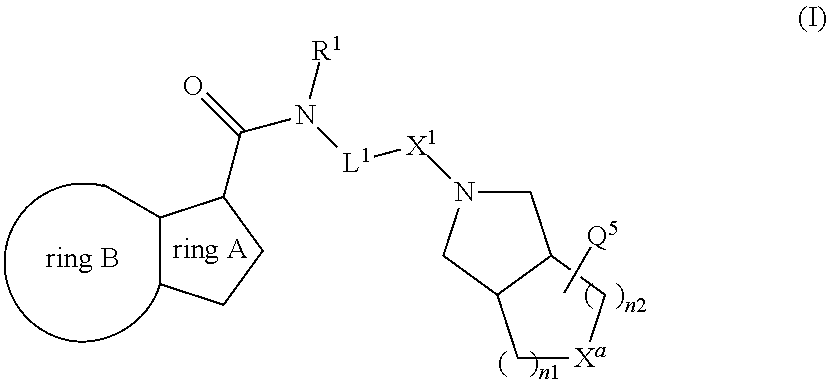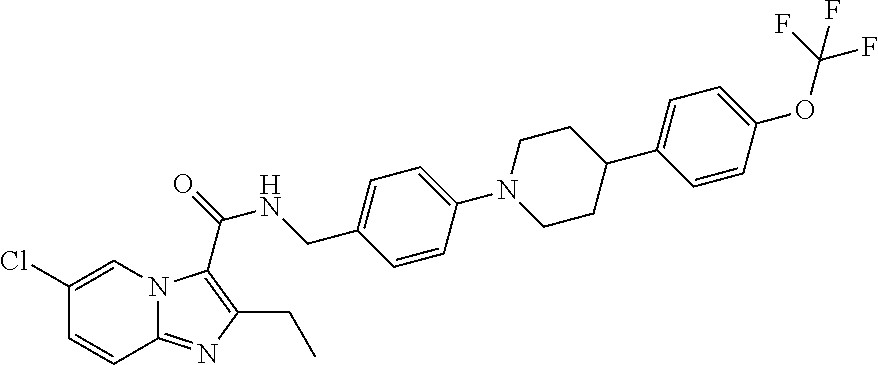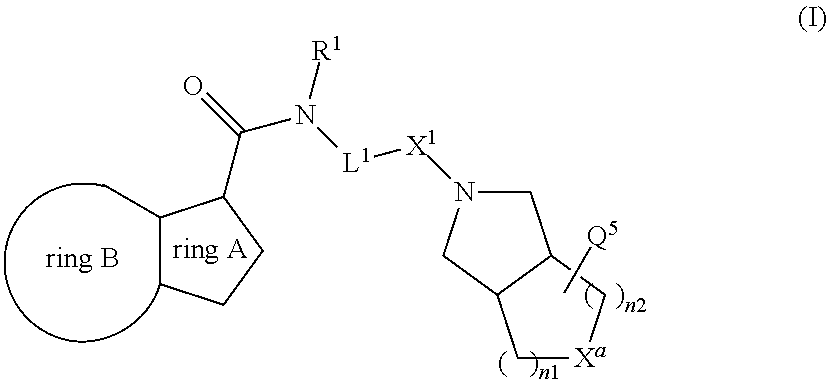Heterocyclic compounds as antibacterials
a technology of heterocyclic compounds and antibacterial agents, applied in the direction of antibacterial agents, drug compositions, metabolic disorders, etc., can solve the problems of unfavorable clinical treatment of single agents, lethal mdr-tb, high cost, etc., and achieve the effect of uniform dosage and ease of administration
- Summary
- Abstract
- Description
- Claims
- Application Information
AI Technical Summary
Benefits of technology
Problems solved by technology
Method used
Image
Examples
examples
Synthesis of Compound 1
[0141]
Preparation of Intermediate M
[0142]A solution of 6-chloro-2-ethylimidazo[3,2-a]pyridine-3-carboxylic acid (CAS [12161242-18-5], 1 g, 4.45 mmol), 4-iodobenzenemethanamine (CAS [39959-59-6], 1.09 g, 4.67 mmol), EDCI.HCl (1.28 g, 6.68 mmol), HOBT (0.601 g, 4.45 mmol) and triethylamine (1.24 mL, 9 mmol) in dichloromethane (8 mL) was stirred and heated at 45° C. for 24 hours. The solution was cooled down to 15° C. The solid was collected by filtration, washed with water and acetonitrile and the solid was dried (vacuum, 45° C., 1 hour) to give intermediate M, 1.2 g, 55%.
[0143]Preparation of Compound 1
[0144]A solution of 5-fluorooctahydrocyclopenta[c]pyrrole (CAS [1554431-13-8], 0.1 g, 0.604 mmol), intermediate M (0.319 g, 0.725 mmol), Pd(dba)2 (0.035 g, 0.06 mmol), Xphos (0.052 g, 0.12 mmol) and sodium tert-butoxide (0.29 g, 3.02 mmol) in 1,4-dioxane (5 mL) was irradiated under microwave at 110° C. for 1 h under N2. Dichloromethane (50 mL) was added and the mi...
PUM
| Property | Measurement | Unit |
|---|---|---|
| time | aaaaa | aaaaa |
| time | aaaaa | aaaaa |
| body weight | aaaaa | aaaaa |
Abstract
Description
Claims
Application Information
 Login to View More
Login to View More - R&D
- Intellectual Property
- Life Sciences
- Materials
- Tech Scout
- Unparalleled Data Quality
- Higher Quality Content
- 60% Fewer Hallucinations
Browse by: Latest US Patents, China's latest patents, Technical Efficacy Thesaurus, Application Domain, Technology Topic, Popular Technical Reports.
© 2025 PatSnap. All rights reserved.Legal|Privacy policy|Modern Slavery Act Transparency Statement|Sitemap|About US| Contact US: help@patsnap.com



